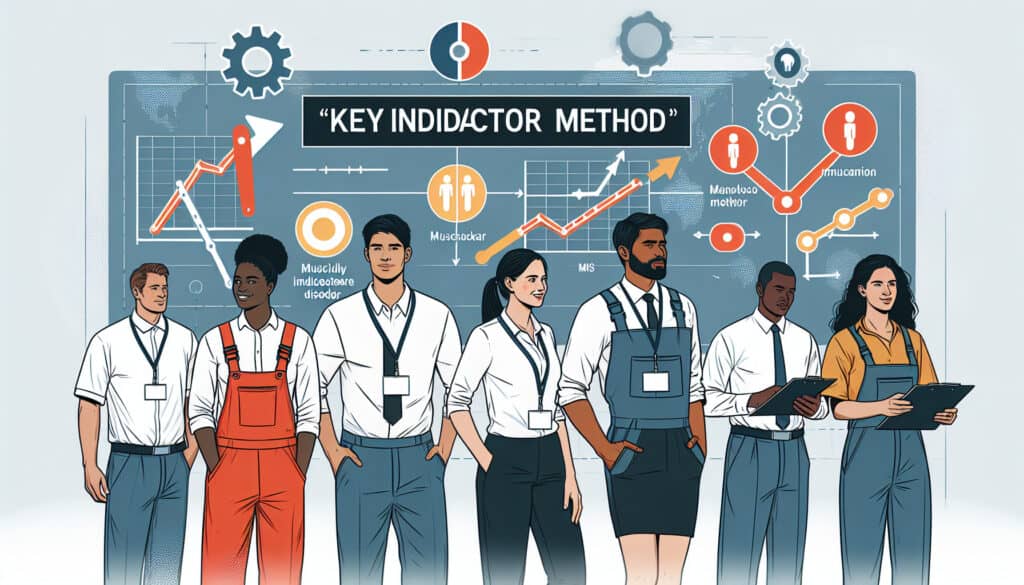To assess the risk of musculoskeletal disorders associated with manual handling tasks.
- المنهجيات: الهندسة, الجودة
Key Indicator Method (KIM)

Key Indicator Method (KIM)
- التحسين المستمر, بيئة العمل, العوامل البشرية, هندسة العوامل البشرية (HFE), التصنيع اللين, تحسين العمليات, تحليل المخاطر, إدارة المخاطر, أمان
الهدف:
كيفية استخدامه:
- A method for assessing the risk of musculoskeletal disorders associated with lifting, carrying, pushing, and pulling tasks. It uses a set of key indicators to score the risk and identify areas for improvement.
الايجابيات
- Provides a structured and systematic way to assess manual handling risks; Can be used by people with limited ergonomics expertise.
سلبيات
- May not be as accurate or detailed as a full ergonomic assessment; May not identify all risk factors.
الفئات:
- بيئة العمل, إدارة المخاطر
الأفضل لـ
- Assessing the risk of manual handling tasks in a workplace to prioritize for further التقييم المريح.
The Key Indicator Method (KIM) is particularly adaptable in environments where physical tasks are integral, such as warehousing, construction, healthcare, and manufacturing industries. Typically implemented during the design phase of workflows or workspaces, KIM involves collaboration among various stakeholders, including safety officers, ergonomists, engineers, and employees performing manual tasks, thus ensuring that diverse perspectives contribute to the assessment process. Data generated by KIM can be employed to direct interventions, reducing ergonomic risks before they lead to injuries. Its systematic approach allows organizations lacking specialized ergonomics expertise to efficiently identify and address potential hazards using established scoring criteria, which streamlines the decision-making process regarding ergonomic interventions. As a scalable tool, KIM can be utilized for new projects or existing operations, allowing for periodic reassessment to maintain workplace safety standards. Real-world applications might involve assessing the safety of lifting procedures in a warehouse setting or evaluating the ergonomics of patient handling in healthcare facilities, ensuring that improvements align with established ergonomic principles while promoting worker health and productivity. Engaging employees in the risk assessment process via KIM fosters a culture of safety and awareness, as individuals directly involved in manual tasks can provide valuable input on their experiences, leading to more effective and accepted ergonomic solutions.
الخطوات الرئيسية لهذه المنهجية
- Identify manual handling tasks performed in the workplace.
- Determine the frequency and duration of each manual handling task.
- Assess the load characteristics, including weight, shape, and size.
- Evaluate the working environment, including space, surface conditions, and availability of equipment.
- Score each task based on predefined key indicators such as posture, force, and repetition.
- Prioritize tasks based on the scores to identify high-risk areas.
- Analyze the scoring results to identify specific risk factors and improvement opportunities.
- Develop a plan for ergonomic interventions to mitigate identified risks.
نصائح للمحترفين
- Incorporate real-time data collection methods to improve accuracy in risk assessments, leveraging يمكن ارتداؤها technology or sensors for dynamic task analysis.
- Utilize a multi-disciplinary approach, collaborating with ergonomists, engineers, and workers to validate KIM scores and identify practical improvement strategies.
- Regularly update the key indicators based on feedback and evolving ergonomic research to ensure the methodology remains relevant and effective in assessing risks.
لقراءة عدة منهجيات ومقارنتها, نوصي باستخدام
> مستودع المنهجيات الشامل <
مع أكثر من 400 منهجية أخرى.
نرحب بتعليقاتكم على هذه المنهجية أو المعلومات الإضافية على قسم التعليقات أدناه ↓، وكذلك أي أفكار أو روابط متعلقة بالهندسة.
السياق التاريخي
1986
(إذا كان التاريخ غير معروف أو غير ذي صلة، على سبيل المثال "ميكانيكا الموائع"، يتم تقديم تقدير تقريبي لظهوره الملحوظ)

منشورات ذات صلة
حاسبة METS إلى السعرات الحرارية
التحليل التلوي
تخطيط الرسائل
مخططات النموذج الذهني
الحد الأقصى لقوى الدفع والسحب المقبولة
تخطيط الاحتياجات المادية (MRP)